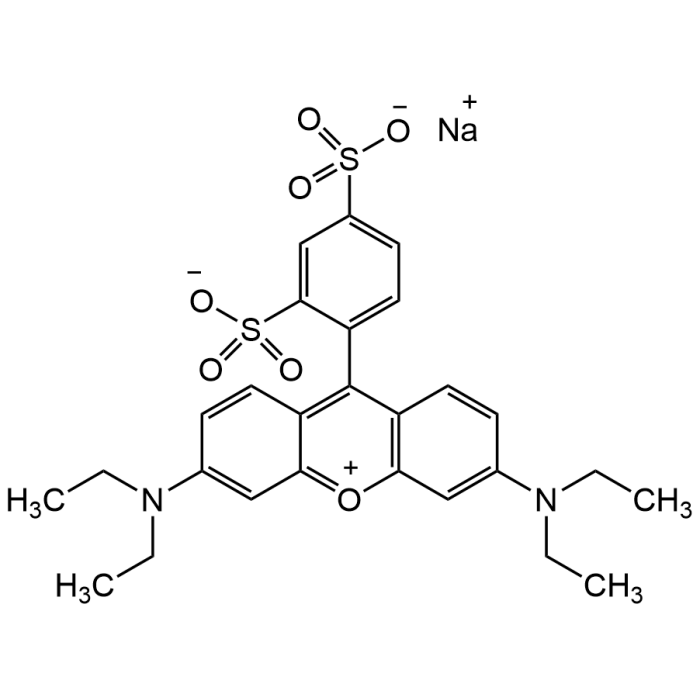Cookie Policy: This site uses cookies to improve your experience. You can find out more about our use of cookies in our Privacy Policy. By continuing to browse this site you agree to our use of cookies.
Chemodex
Sulforhodamine B sodium salt
As low as
116
CHF
CHF 116.00
In stock
Only %1 left
CDX-S0005-G0055 gCHF 116.00
CDX-S0005-G02525 gCHF 348.00

| Product Details | |
|---|---|
| Synonyms | C.I. Acid Red 52; C.I. 45100; Acid Red XB; Acid Rhodamine B |
| Product Type | Chemical |
| Properties | |
| Formula | C27H29N2NaO7S2 |
| MW | 580.65 |
| CAS | 3520-42-1 |
| Source/Host Chemicals | Synthetic |
| Purity Chemicals | ≥95% (NMR) |
| Appearance | Powder. |
| Solubility | Soluble in DMSO, ethanol, DMF or water (all 10mg/ml). |
| Identity | Determined by 1H-NMR. |
| Declaration | Manufactured by Chemodex. |
| Other Product Data |
Click here for Original Manufacturer Product Datasheet |
| InChi Key | SXQCTESRRZBPHJ-UHFFFAOYSA-M |
| Smiles | CCN(CC)C1=CC2=[O+]C3=C(C=CC(N(CC)CC)=C3)C(C4=C(S([O-])(=O)=O)C=C(S([O-])(=O)=O)C=C4)=C2C=C1.[Na+] |
| Shipping and Handling | |
| Shipping | AMBIENT |
| Short Term Storage | +20°C |
| Long Term Storage | +20°C |
| Handling Advice | Protect from light and moisture. |
| Use/Stability | Stable for at least 2 years after receipt when stored at RT. |
| Documents | |
| Product Specification Sheet | |
| Datasheet |
 Download PDF Download PDF |
Description
Sulforhodamine B (SRB) is a water-soluble, anionic red fluorescent aminoxanthene dye. It is often used as a membrane-impermeable polar tracer or for cell density determination via determination of cellular proteins (cytotoxicity assay). The SRB assay is extensively used for in vitro cytotoxicity screening and in cell based studies. This method relies on the property of SRB, which binds stoichiometrically to proteins under mild acidic conditions and then can be extracted using basic conditions. Thus, the amount of bound dye can be used as a proxy for cell mass, which can then be extrapolated to measure cell proliferation. Spectral Data: λex 560nm, λem 580nm.
Product References
(1) P. Skehan, et al.; J. Natl. Cancer Inst. 82, 1107 (1990) | (2) S.P. Fricker; Toxicol. In Vitro 8, 821 (1994) | (3) W. Voigt; Methods Mol. Med. 110, 39 (2005) | (4) V. Vichai & K. Kirtikara; Nat. Protoc. 1, 1112 (2006) | (5) E.A. Orellana & A.L. Kasinski; Bio. Protoc. 6, e1984 (2016)





